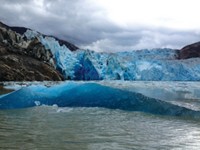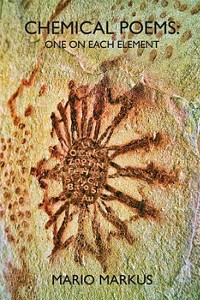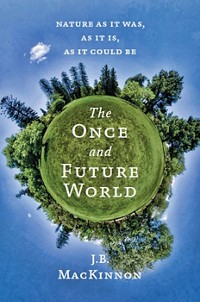Advertisement
Grab your lab coat. Let's get started
Welcome!
Welcome!
Create an account below to get 6 C&EN articles per month, receive newsletters and more - all free.
It seems this is your first time logging in online. Please enter the following information to continue.
As an ACS member you automatically get access to this site. All we need is few more details to create your reading experience.
Not you? Sign in with a different account.
Not you? Sign in with a different account.
ERROR 1
ERROR 1
ERROR 2
ERROR 2
ERROR 2
ERROR 2
ERROR 2
Password and Confirm password must match.
If you have an ACS member number, please enter it here so we can link this account to your membership. (optional)
ERROR 2
ACS values your privacy. By submitting your information, you are gaining access to C&EN and subscribing to our weekly newsletter. We use the information you provide to make your reading experience better, and we will never sell your data to third party members.
Environment
Fighting The Resource Wars
A measured view of the human impulse to mine mineral wealth, despite often terrible consequences
by Sam Kean
December 16, 2010
| A version of this story appeared in
Volume 88, Issue 51

On June 14, the New York Times ran a front-page article about a trillion dollars’ worth of copper, cobalt, gold, iron, and lithium discovered in Afghanistan. The story argued that the deposits could become the “backbone of the Afghan economy” and help the country rebuild after decades of war and occupation. Other media outlets scolded the Times for hyping the story as something new—citing evidence that the Soviet Union knew about the vast hoards way back in 1985.
Few pundits, however, challenged the central question of the article: Will mineral wealth really benefit Afghanistan? Or will it cause the same economic and environmental turmoil that plagues other developing countries with mineral wealth?
In his measured and often diverting book “Treasures of the Earth: Need, Greed, and a Sustainable Future,” author Saleem H. Ali notes that the answer isn’t obvious, especially not long term. That dilemma—more money, more problems—is usually known as the “resource curse.” It has become so engrained in some economics circles that in 2008 two economists had to plead in Science that “economic advisors should be aware that natural resources do not necessarily spell doom for development.” In other words, nowadays people actually need reassuring that mineral treasures don’t automatically bring destruction and chaos to a country. Ali’s book explores whether the resource curse might not apply just to individual countries, but to all of Spaceship Earth.
The book looks at every facet of resource extraction, and Ali begins with the very earliest miners in history—who, he notes, started digging not for riches or raw materials for tools. Instead, Paleolithic people mined materials to ornament their bodies—they simply wanted to look pretty. That motivation might not be surprising with alluring gold, but Ali says that even coal in China was originally used for ornamentation, and the oldest known mine—43,000 years old, based in Swaziland—produced ochre, a dark orange cosmetic.

People did begin mining raw ore for weapons and utensils eventually, of course, and perhaps only the invention of farming has revolutionized our societies more than mining. It’s no coincidence that we mark stages of human development—Bronze Age, Iron Age—by what metals humans finally figured out how to smelt and exploit. Ali quotes archaeologist F. L. Koucky saying, “It is unfortunate that the slag heaps [from copper mining] in Cyprus have not been treated as important antiquities, for they record an effort greater than the building of the pyramids or the construction of many great cities of the past.”
On the basis of this history, Ali accepts that human beings have always had a “treasure-seeking impulse,” and he pragmatically accepts that we’re always going to have one. At the same time, he notes an acceleration in our use of minerals. He quotes an unsettling sign at the National Mining Museum in Leadville, Colo., that claims, “More minerals have been consumed since the start of World War II than in all of the rest of human history.” And we’re consuming more than just old familiars like iron and gold. Ali notes that in 1900 human beings exploited about 20 of the elements on the periodic table; today we utilize all 92 elements up to the heaviest natural one, uranium (and even some beyond uranium, such as plutonium and curium).
New & Noteworthy
Career Opportunities in Clinical Drug Research, by Rebecca J. Anderson, Cold Spring Harbor Laboratory Press, 2010, 279 pages, $59 hardcover (ISBN 978-1-936113-05-7)
Handbook introduces undergraduate and graduate students to entry-level clinical job opportunities and explains how to qualify for them, with a particular emphasis on how to gain the clinical experience that a hiring manager will accept.
Journey of a Lifetime: Memoir of an Indian American Chemist, by Basudeb DasSarma, Xlibris Corp., 2010, 158 pages, $29.99 hardcover, $19.99 softcover (ISBN 978-1-4535-7255-9; 978-1-4535-7254-2)
Book presents the life story of the late chemist Basudeb DasSarma from his boyhood in India to his life as a university professor in the U.S.
Glyphosate Resistance in Crops and Weeds: History, Development, and Management, edited by Vijay K. Nandula, John Wiley & Sons, 2010, 321 pages, $99.95 hardcover (ISBN: 978-0-470-41031-8)
Features contributions from leading experts in the many disciplines needed to fully understand glyphosphate-resistant crops and weeds. The authors have reviewed and analyzed all the latest research findings as well as the latest technologies developed to manage GR crops and weeds.
Makers of the Microchip: A Documentary History of the Fairchild Semiconductor, by Christophe Lécuyer and David C. Brock, MIT Press, 2010, 368 pages, $24.95 hardcover (ISBN 978-0-262-01424-3)
A history of the early years of Fairchild Semiconductor that examines the technological, business, and social dynamics behind its innovative products.
What’s more, many of the projects he mentions to dig up these elements—in Australia, South Africa, Siberia, and North America, for example—are staggeringly large. One pit mine in Utah, for copper, spans 2.5 miles and reaches down a mile deep into Earth, roughly as deep as the Grand Canyon (and formed in 6 million fewer years). Changes on this scale, Ali says, can permanently alter the hydrology and geology of the landscape, and some lands may not recover. He quotes Adolf Lüderitz, a German colonialist from the later 1800s, saying, “I should be pleased if it turned out that the entire [colony, present-day Namibia] is a colossal mineral deposit, which once it is mined will leave the area one gaping hole!” Mining multinationals today would (one hopes) find that glee repugnant. But in many cases that Ali notes—especially when metal markets collapse (as they are wont to do) and remove any economic incentive to rehabilitate the land—companies leave behind more expansive holes than Lüderitz could realistically have ever hoped to dig.
One could argue that such drastic alterations are worth it, as long as people mired in poverty can finally enrich themselves. But again, that doesn’t always happen, especially in Africa, probably the most mineral-rich and dirt-poor continent on Earth. Indeed, resources like petroleum and coltan (a mix of tantalum and niobium, metallic elements vital for cell phones) have, far from helping people improve their lives, actually fueled wars. To be sure, Ali doesn’t make the simplistic mistake of saying that mineral riches caused armed conflicts; ancient social and ethnic tensions did. But the sudden influx of cash into countries that sell their treasure did exacerbate dire situations in Chad, Congo, and other places. Ali notes a peculiar but resonant phrase for the ancient Roman habit of effectively sentencing someone to death by ordering him to work in their mines; many countries in Africa today seem condemned to the same damnation ad metalla.
Those are serious charges, but “Treasures of the Earth” is no antimining screed. Ali approaches every topic with detachment, and although the book leans toward a scholarly treatment of resource extraction, Ali (a professor of environmental studies at the University of Vermont) is not above enlivening his prose with an occasional aside. The first few chapters especially are peppered with wonderful anecdotes and factoids. He relates that the brown jinxiang stone from China smells unaccountably like chocolate; that the oldest printed book in existence, from A.D. 868, was called “Diamond Sutra”; that Taliban officials visited Texas to negotiate with the executives of natural gas firms in 1997, to work out a contract to build a gas pipeline in Afghanistan and make the country some much-needed cash; and that when Taliban-sponsored terrorists knocked down the World Trade Center towers four years later, the rubble found new life, as 100,000 tons of high-grade scrap metal went on the world market, with over half ending up in China.
The book also avoids being polemical because Ali takes pains to note success stories: those countries that have managed their resources wisely and made their people better off. Occasionally, even poor indigenous groups within larger countries—who all too often get pushed off their land—have cashed in on mining projects. What’s more, even after accepting that resources like petroleum have caused serious social and environmental damage, Ali, ever pragmatic, argues that we will need oil for the foreseeable future, because our energy infrastructure and economy right now are so tied up with it. And in the distant future, he says, biofuels and other renewables can fill only part of our mineral needs; we will always have to mine something. Even on the contentious issue of the environmental conduct of mining companies, Ali says it’s too easy to roll our eyes and dismiss their efforts to be more environmentally friendly as greenwashing. He believes such programs deserve time to mature and perhaps even to be given the benefit of the doubt.
In the end, Ali achieves the balance he strives for. However—a strange complaint—at times the book seems too meticulously balanced. After arguing that current consumption rates are unsustainable and that mining can do serious harm to people and the land, it would be nice for the reader to get some hint of what might be done to alleviate these problems. Do we have to cut back consumption? Can technology save us? Are we flat-out doomed? We get a firm maybe each time. To be fair, you can’t expect Ali to lay out a one-paragraph (or even one-chapter) solution to complex societal problems. But the book could have used more urgency, more advocacy for taking one path over another.
About the only conclusion we can form is that people will continue to draw irreplaceable treasures out of the ground and do either useful or ridiculous things with them. And Ali’s book is a valuable reminder that we have to be smarter about it: “We have been wrong in the past,” he writes, “about our mineral projections ... and we need to spend more effort in understanding why we were wrong.”





Join the conversation
Contact the reporter
Submit a Letter to the Editor for publication
Engage with us on Twitter